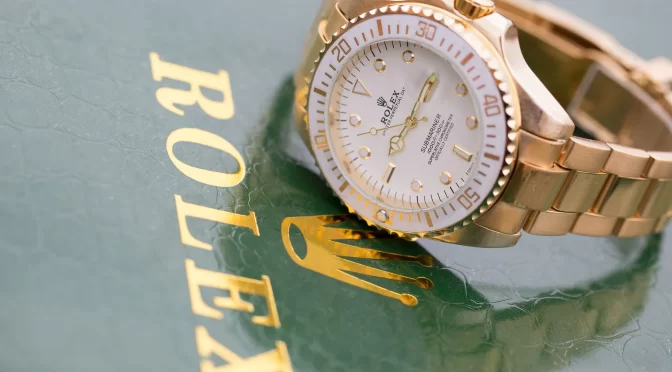Rolex is a watch brand that needs no introduction. It is a household name synonymous with luxury, precision, and style. For over a century, Rolex has been a leading manufacturer of high-end watches, revered for their exceptional quality and reliability. In this essay, we will explore the history of Rolex, its legacy in the watch industry, and its enduring appeal to collectors and enthusiasts around the world.
The History of Rolex
Rolex was founded in 1905 by Alfred Davis and Hans Wilsdorf in London. The company was initially known as Wilsdorf and Davis before being renamed Rolex in 1908. The name Rolex was chosen because it was easy to pronounce in any language and sounded elegant.
From the beginning, Wilsdorf and Davis had the vision to create watches that were both elegant and accurate. In 1910, Rolex became the first watchmaker to receive the Swiss Certificate of Chronometric Precision, an award that recognized the brand’s commitment to accuracy and precision.
Over the years, Rolex continued to innovate and develop new technologies that would set it apart from other watchmakers. In 1926, Rolex introduced the Oyster, the world’s first waterproof watch. The Oyster’s hermetically sealed case protected the movement from water, dust, and other elements, making it ideal for divers, pilots, and anyone who needed a reliable watch in extreme conditions.
In the following years, Rolex introduced other notable innovations, including the Perpetual self-winding movement in 1931, the Datejust in 1945, and the Submariner in 1953. Each of these innovations helped cement Rolex’s reputation as a leader in the watch industry.
Rolex’s Legacy in the Watch Industry
Rolex’s legacy in the watch industry is one of innovation, precision, and style. Over the years, Rolex has set the standard for what a luxury watch should be, and its designs and technologies have influenced the entire industry.
One of the most significant contributions Rolex has made to the watch industry is its development of the Perpetual self-winding movement. This technology, which was first introduced in 1931, allowed watches to wind themselves automatically as the wearer moved, eliminating the need for manual winding. Today, almost all automatic watches use a variation of Rolex’s Perpetual movement.
Another significant contribution Rolex has made to the watch industry is its development of the Oyster case. This technology, which was first introduced in 1926, made watches waterproof and dustproof, making them ideal for use in extreme conditions. Today, almost all sports watches use a variation of Rolex’s Oyster case.
Rolex’s enduring legacy is also reflected in the brand’s continued success and popularity. Despite the rise of new watch brands and technologies, Rolex remains one of the most sought-after luxury watch brands in the world. Its designs are timeless, and its quality and reliability are unmatched.
Rolex’s Enduring Appeal
Rolex’s enduring appeal is due in part to its timeless designs, exceptional quality, and reliability. Rolex watches are designed to last a lifetime and are often time passed down from generation to generation. The brand’s commitment to quality and attention to detail is evident in every watch it produces.
Another reason for Rolex’s enduring appeal is its association with luxury and status. Rolex watches are a symbol of success and achievement, and owning one is often seen as a sign of wealth and prestige. This association with luxury and status has helped fuel demand for Rolex watches, making them highly sought after by collectors and enthusiasts alike.
Rolex’s association with sports and adventure has also contributed to its enduring appeal. Many Rolex watches, such as the Submariner, GMT-Master, and Explorer, were designed for use in extreme conditions and have become iconic symbols of adventure and exploration.








